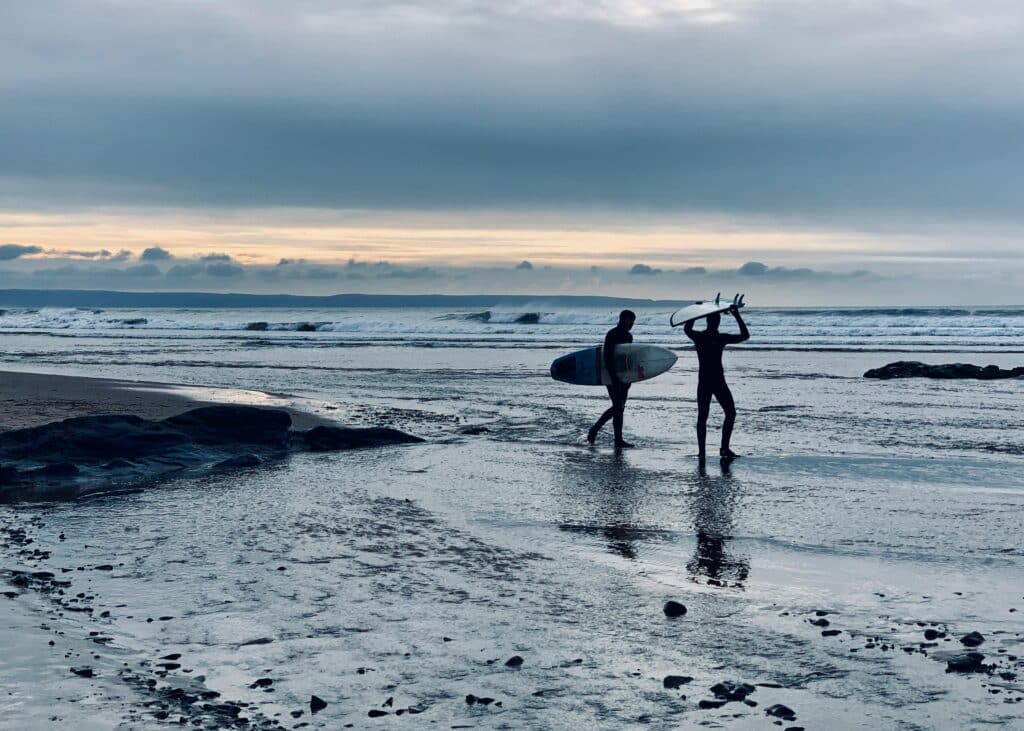
Surfing in the winter offers a unique thrill—smaller crowds, pristine waves, and the serene beauty of the colder months. However, it also comes with challenges, especially for beginners. As someone who has surfed the cold waves of Alaska, I’m here to give you my tips to make the most of your winter surf trip:
Invest in the right gear
Winter surfing requires more than just a board and sunscreen. Here’s what you’ll need:
- Wetsuit: Opt for a 4/3mm or 5/4mm full wetsuit to keep you warm. Make sure it fits snugly without restricting movement.
- Boots and Gloves: Neoprene boots (5mm or thicker) and gloves are essential for protecting your extremities from the cold.
- Hood: A wetsuit hood will prevent heat loss from your head and keep you comfortable during long sessions.
Prioritize safety
The ocean can be more unpredictable in the winter, with stronger swells and colder conditions.
Make sure to check conditions before you head out. Use surf forecasting apps like Surfline to monitor wave size, swell direction, and water temperature. Know your limits. If the waves look intimidating, wait for calmer days to build your confidence.
Warm up and stay warm
Cold muscles are more prone to injury, so warming up is crucial. Stretch before you start surfing to loosen up those muscles and prepare your body for action. Pack a thermos of hot tea, cocoa, or even just hot water to help you reheat between sessions.
Paddle efficiency
Winter waves often come with strong currents, requiring efficient paddling. Focus on your form, using your core and shoulders to paddle. Keep your arms straight and strong.
Remember to pace yourself-conserve energy by taking breaks when you need to, especially in cold water.
Start small
If you’re new to winter surfing, begin with smaller, manageable waves to build confidence. Progressing gradually will help you develop skills and acclimate to the conditions without feeling overwhelmed.
Respect the ocean
Winter brings larger swells, so it’s vital to respect the power of the ocean. Learn how to identify and avoid dangerous currents. Always take a surfing buddy, whether it’s an experienced pal or a pro instructor-it makes you safer and adds to the fun!
Take care of your gear
After a cold-water session, your gear needs extra care. Wash your wetsuit, boots, and gloves with warm freshwater to remove salt and sand. Dry your gear properly by hanging it indoors or in a shaded area to avoid damage from freezing temperatures.
Warm up post-surf
After your session, prioritize recovery. Change as quickly as possible-bring a dry robe or poncho for a fast change into warm clothes. Don’t forget to drink water and eat a nutritious snack to replenish your energy.
About Colby Leachman
Colby Leachman, a Venice Beach local, is always chasing waves along the California coast. But, he and his surfboard also often venture into far-flung surfing destinations like Alaska, New Zealand, Nicaragua and beyond. Follow along for the adventure of his surfing blog.

Leave a Reply